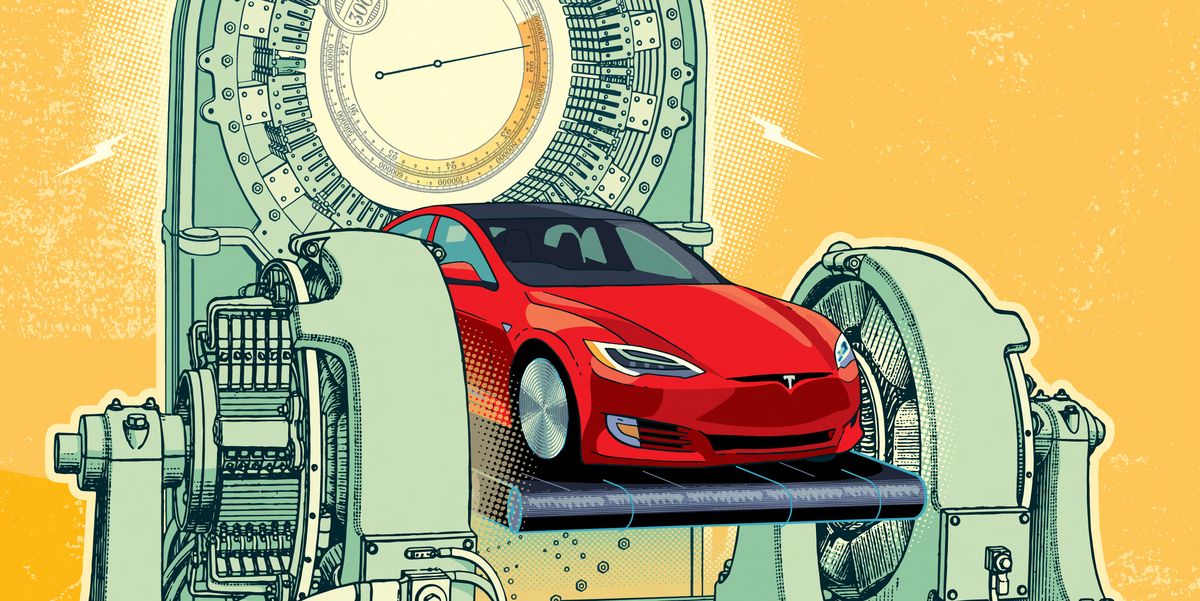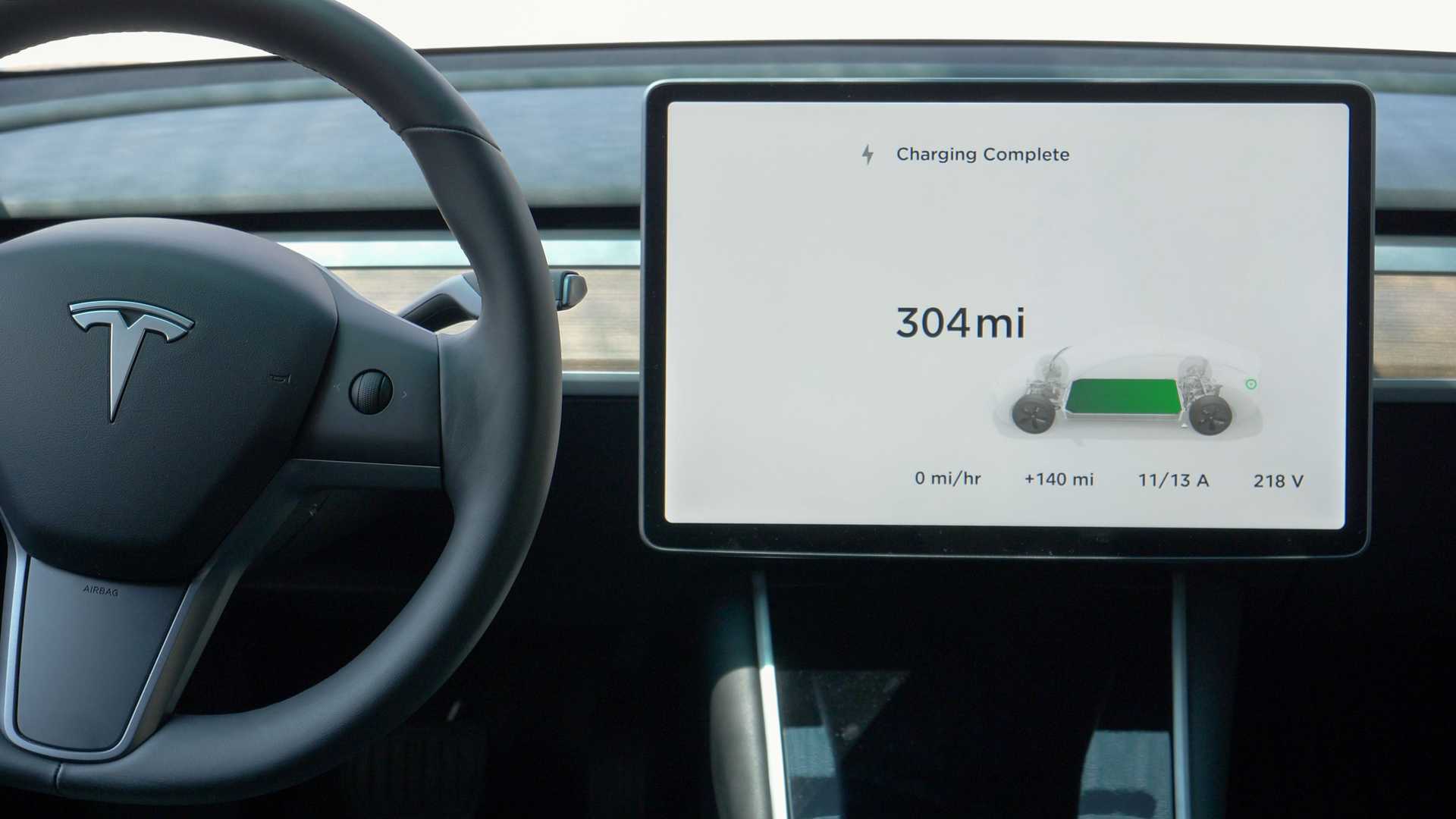- Joined
- Dec 31, 2021
- Messages
- 724
- Reaction score
- 706
- Cars
- Lucid Air Grand Touring
Been busy while car is in for PPF. I’ll be back.Where's @copper in all this?
Been busy while car is in for PPF. I’ll be back.Where's @copper in all this?
Regarding the mileage my car has just over 2100 miles on it.Wow @GEWC got 97% of EPA and @SaratogaLefty got 94% of EPA...very nice guys and gals!
The first 14 mile stretch was when I thought my Trip A display was broken because it showed 6.4 mi/kwh and 0 kwh used. Then we hit the second stretch and mi/kwh started dropping so I knew it was working okay. Besides all the climbing and descending there was also a lot of very curvy stretches and we did hit a few stoplights in the Half Moon Bay area.for those interested in the route elevation change
View attachment 2158
View attachment 2159
View attachment 2160
Sorry to disagree with you again, but the EV range rating tests, as I understand, don't involve coast down testing. They do coast down testing with gasoline engines. They only do dynamometer testing for EVs, as I roughly described above. A car has to be moving on a road to do coast down testing to incorporate the impact of drag coefficient. Dynamometer tests don't have air blowing over the car. The standard used to test EV range is the Multi-Cycle city/highway test procedure from the SAE J 1634 standard and involves 5 cycles of test at urban and highway speeds until the battery is depleted, and energy consumed in the test is calculated with the miles driven. Future testing may include drag coefficient tests but they don't now do it. They also need to figure out a way to incorporated regen braking too, because of its unique advantage over ICE cars.
If you have more recent testing procedures than is described below, I would appreciate you posting it for all to see, because I haven't seen anything that includes coast down testing for EVs. The only manner that drag coefficient is incorporated is in the 0.7 adjustment factor noted earlier.
How Does The EPA Calculate Electric Car Range? - CleanTechnica
There’s one statistic to rule them all when it comes to comparing electric vehicles: range. Range gets headlines. It earns automakers bragging rights, or gives their competitors mocking rights. Range is what determines whether or not an electric vehicle will fit into someone’s lifestyle.cleantechnica.com

Sorry to disagree with you again, but the EV range rating tests, as I understand, don't involve coast down testing. They do coast down testing with gasoline engines. They only do dynamometer testing for EVs, as I roughly described above. A car has to be moving on a road to do coast down testing to incorporate the impact of drag coefficient. Dynamometer tests don't have air blowing over the car. The standard used to test EV range is the Multi-Cycle city/highway test procedure from the SAE J 1634 standard and involves 5 cycles of test at urban and highway speeds until the battery is depleted, and energy consumed in the test is calculated with the miles driven. Future testing may include drag coefficient tests but they don't now do it. They also need to figure out a way to incorporated regen braking too, because of its unique advantage over ICE cars.
If you have more recent testing procedures than is described below, I would appreciate you posting it for all to see, because I haven't seen anything that includes coast down testing for EVs. The only manner that drag coefficient is incorporated is in the 0.7 adjustment factor noted earlier.
How Does The EPA Calculate Electric Car Range? - CleanTechnica
There’s one statistic to rule them all when it comes to comparing electric vehicles: range. Range gets headlines. It earns automakers bragging rights, or gives their competitors mocking rights. Range is what determines whether or not an electric vehicle will fit into someone’s lifestyle.cleantechnica.com

Haha- was writing my post as you posted yours!Again, you're wrong. All vehicles that get fuel economy ratings, whether fueled by gasoline, diesel, or electrons, are tested on dynamometers. And all vehicles use coast down testing as part of the process of determining the load that the dynamometer places on the vehicle during each test cycle.
What would be so special about electric vehicles that aerodynamic drag wouldn't be considered in EPA testing them? And what incentive would there be for an EV manufacturer to reduce aerodynamic drag for their vehicles if such an improvement wouldn't be reflected in EPA test results? Lucid is rightfully proud of the low coefficient of drag they've achieved for the Air. Would they have done all this work if they got nothing out of it in EPA testing? Why not just shape the car like a big old brick?
Here's a recent article from Car and Driver explaining how Teslas (electric vehicles, the last time I looked) get the range values they do on EPA tests. You can read the whole article at your leisure, but, to partially quote from it: "EPA range and efficiency tests are run on dynamometers, which must be calibrated so the resistance of the rollers mimics what happens out on real roads. The net force fighting a vehicle's forward motion is called road load and encompasses aerodynamic drag, tire rolling resistance, and driveline friction. Road load is measured through coastdown tests ... The resulting data of how quickly the vehicle slows is used to calculate the three coefficients for a quadratic equation that expresses the pounds of force resisting a vehicle's forward motion at a given speed. These coefficients define the dyno's resistance during efficiency and range testing."

The Secret Adjustment Factor Tesla Uses to Get Its Big EPA Range Numbers
How Tesla puts distance between itself and the competition while still playing by the EPA's rules.www.caranddriver.com
Absolutely. I hit 4.2 mi/kWh yesterday on a drive from Newport RI to Providence with no ACC (AGT 19” wheels). I did the same run a few weeks ago with ACC and similar exterior temperature and got 3.6 mi/kWh. Thanks for putting together this test, it confirms what we had suspected/expected in a good way.After this run I am convinced High Regen is significantly better than ACC for increasing range.
GEWC has been the clear high range performer consistently and that car has never used ACC.Absolutely. I hit 4.2 mi/kWh yesterday on a drive from Newport RI to Providence with no ACC (AGT 19” wheels). I did the same run a few weeks ago with ACC and similar exterior temperature and got 3.6 mi/kWh. Thanks for putting together this test, it confirms what we had suspected/expected in a good way.
Interesting..i hd no ideaAlmost. The EPA range test is done on a dynamometer inside a building. Perfectly flat, constant temperature, NO wind resistance. That's how they benchmark the cars. After that they engage in a SWAG session, post a scientific fudge factor (including all the impossible to determine variables) to the result and come up with a real-life range. Isn't science wonderful!
One thing I have noted is that my numbers have been going up while driving pretty much the same way. First highs 3s in March, then 4s in April and just recently sometimes 5. So, is the car giving me better numbers because I have been driving for range all along or is it just that much better in warmer weather? And are other factors involved? Only time will tell. I'm currently at around 1800 miles.Absolutely. I hit 4.2 mi/kWh yesterday on a drive from Newport RI to Providence with no ACC (AGT 19” wheels). I did the same run a few weeks ago with ACC and similar exterior temperature and got 3.6 mi/kWh. Thanks for putting together this test, it confirms what we had suspected/expected in a good way.
I have always wondered if there is an additional energy drain due to the load of all the sensors and computers involved in driver assistance.GEWC has been the clear high range performer consistently and that car has never used ACC.
No real knowledge but I would think it's more likely that ACC does not do one pedal driving. Regen is probably disengaged during ACC usage and it uses gas and brakes to adjust speed so it loses all benefits of Regen resulting in the difference in mileageI have always wondered if there is an additional energy drain due to the load of all the sensors and computers involved in driver assistance.
This might be true if the ACC implementation is something they got "off the shelf" from another vendor (Nvidia?). It's possible it cannot account for regen and relies on brake/gas, like you suggestedNo real knowledge but I would think it's more likely that ACC does not do one pedal driving. Regen is probably disengaged during ACC usage and it uses gas and brakes to adjust speed so it loses all benefits of Regen resulting in the difference in mileage
I'm pretty sure ACC does regen. At the lower part of the screen when in ACC, it shows the same regen/power indicators. They're just in a small bar form rather than a speedometer looking thing. Also, I don't think you get a dramatically better range without ACC. For every more emphatic slow down relative to what ACC would do, you have a similarly emphatic acceleration. I wondered if ACC had anything to do with lower range shortly after I got my car when I took it to LA. But I think the much, much bigger factor is Strong versus Normal regen. AC (not ACC) is also a huge drain.This might be true if the ACC implementation is something they got "off the shelf" from another vendor (Nvidia?). It's possible it cannot account for regen and relies on brake/gas, like you suggested
I have no evidence of this, just speculating.
Yeah...but in greater Phoenix, I will drive with AC on all the time. Such is life in the hot desert.I'm pretty sure ACC does regen. At the lower part of the screen when in ACC, it shows the same regen/power indicators. They're just in a small bar form rather than a speedometer looking thing. Also, I don't think you get a dramatically better range without ACC. For every more emphatic slow down relative to what ACC would do, you have a similarly emphatic acceleration. I wondered if ACC had anything to do with lower range shortly after I got my car when I took it to LA. But I think the much, much bigger factor is Strong versus Normal regen. AC (not ACC) is also a huge drain.
What are revenue opportunities. How the heck did they get certified at 4.1 and Peter crows about it at every opportunity so what is Tesla then 2.0 or lowerStats so far for my GT on 19” wheels:
Caveat: I’m in a pretty hilly area of the bay and get lots of regen opportunities. I have had very little time on predominantly flat drives and that may affect these numbers.
- “Very spirited“ driving gets around 2.3 (ie: sprint mode lots and blasting at every chance I can get, freeway well over 75mph)
- Mildly spirited driving gets around 3.3 (sprint up an on ramp maybe 1-2 times in an otherwise sedate drive, freeway ~75mph)
- Chilled out driving has gotten 3.7-3.9 (no sprint, freeway <75mph unless going down a steep hill)
- Overall since purchase is 2.9 due to a lot of very spirited driving.
What are revenue opportunities. How the heck did they get certified at 4.1 and Peter crows about it at every opportunity so what is Tesla then 2.0 or lower

